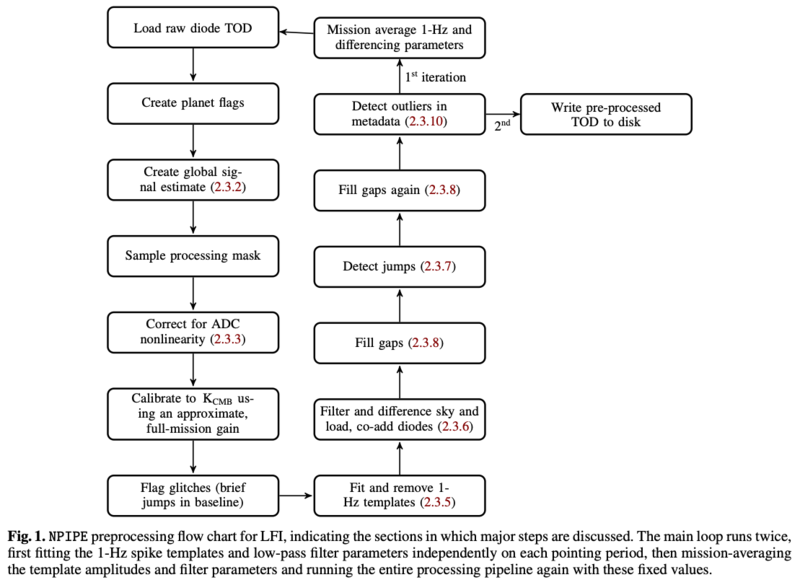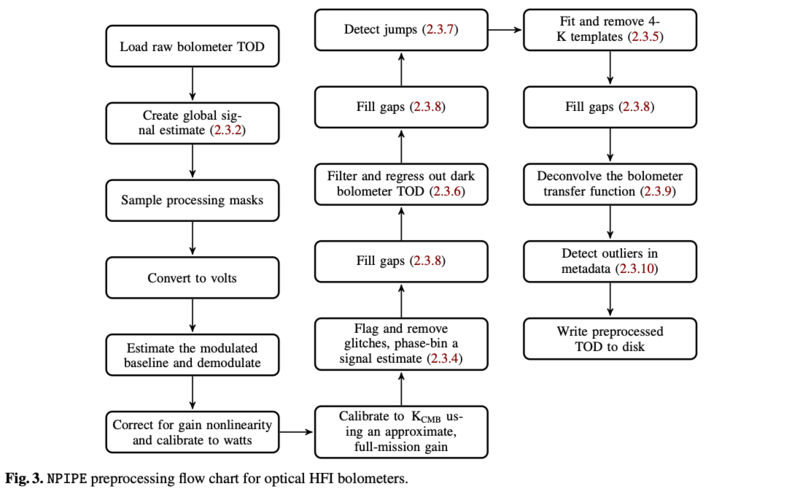Difference between revisions of "NPIPE preprocessing"
| Line 4: | Line 4: | ||
[[File:Preproc_lfi_-_png.png|800px|frameless|left|LFI preprocessing subpipeline]] | [[File:Preproc_lfi_-_png.png|800px|frameless|left|LFI preprocessing subpipeline]] | ||
| − | [[File: | + | [[File:Preproc_hfi.png|800px|frameless|left|HFI preprocessing subpipeline]] |
[[File:Preproc hfi optical.png|800px|frameless|left|HFI preprocessing subpipeline for optical bolometers]] | [[File:Preproc hfi optical.png|800px|frameless|left|HFI preprocessing subpipeline for optical bolometers]] | ||
Latest revision as of 11:15, 22 June 2021
NPIPE preprocessing applies to one detector at a time. It begins with loading the entire detector data set into memory and ends with writing the processed data into a file. While in memory, raw timelines are approximately calibrated, jump-corrected and flagged. Pointing periods (rings) with anomalous statistics are flagged as unusable. LFI preprocessing requires two iterations: the first iteration optimizes the sky-load differencing parameters and the 1-Hz spike templates; and the second iteration applies these and other corrections. HFI processing includes cosmic-ray glitch removal and bolometric transfer-function deconvolution.
Below are schematics of both sub pipelines. The diagrams are reproduced from A&A 643, A42 (2020) and the numbers in brackets refer to section numbers in that paper.
sudden change of the baseline level inside a ring
(Planck) Low Frequency Instrument
(Planck) High Frequency Instrument


